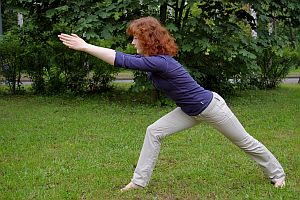Fruits and Vegetables Add Years to Your Life – Literally

We’ve been told for years – and by pretty much everyone involved with either nutrition or health care – that eating more fruits and vegetables is good for you and can improve your life. Well, it turns out that these people weren’t telling us the whole story. Eating more fresh fruits and vegetables can actually extend your life, and add years to it.
That’s the message of a study conducted at University College London, and published recently in the Journal of Epidemiology & Community Health. The researchers used data from the Health Survey for England to analyze the eating habits of over 65,000 people considered representative of the English population between the years 2001 and 2013. What they found was that the more fresh fruits and vegetables these people ate – at any age – the less likely they were to die.
This study is the first to compare the consumption of fruits and vegetables with rates of cancer, heart disease, and all-cause deaths in a nationally-representative population. It is also the first to link health benefits to per-portion quantities of fruits and vegetables, and the first to identify the types of fruits and vegetables with the most benefit.
The figures are compelling and consistent. Eating 1-3 servings of fresh fruit and vegetables per day decreases your risk of death in the three categories (cancer, heart disease, and all causes) by 11%, 9%, and 14%, respectively, compared with eating none. Eating 3-5 servings per day decreases these risks by 19%, 18%, and 29%, respectively. Eating 7 or more servings of fruit and vegetables per day decreases your risk of dying from these causes by a whopping 25%, 31%, and 42%, respectively.
The researchers also found that fresh vegetables have a more significant effect on longevity and lowered mortality risk than fruits, with each daily vegetable portion added to the diet lowering mortality risk by 16%. Eating salad lowered mortality risk by 13% for each portion added daily, and fruit lowered mortality risk by 4% for each added portion.
Interestingly, the researchers found no benefits to longevity from fruit juice, as opposed to fresh, whole fruit. Furthermore, canned or frozen fruit appeared to actually increase risk of death by 17% per portion. The researchers attributed this to the fact that most canned and frozen fruits contain high sugar levels, and that the negative health impacts of the sugar may outweigh any benefits.
Lead author of the study Dr. Oyinlola Oyebode says of the findings, “We all know that eating fruit and vegetables is healthy, but the size of the effect is staggering. The clear message here is that the more fruit and vegetables you eat, the less likely you are to die at any age. Vegetables have a larger effect than fruit, but fruit still makes a real difference. If you’re happy to snack on carrots or other vegetables, then that is a great choice but if you fancy something sweeter, a banana or any fruit will also do you good.”


 Everyone deals with stress in their lives. And—in small doses—this can be a very good thing. Manageable amounts of stress can actually help you perform at your best and may even help you develop your abilities. However, far too many of us are stressed to the point that our health and well-being could be compromised.
Everyone deals with stress in their lives. And—in small doses—this can be a very good thing. Manageable amounts of stress can actually help you perform at your best and may even help you develop your abilities. However, far too many of us are stressed to the point that our health and well-being could be compromised.
 If you are middle-aged (40-60, by some definitions) or older, here’s 15-second self-test for you. Do you often find yourself needing to sit down or steady yourself against a table when putting on your shoes or stepping into pants? Do you increasingly need to use the armrests of your chair to “push off” when getting up? Do you generally hold on to handrails whenever you go up and down stairs? If you stand with your feet close together, do you feel unsteady and unable to balance yourself properly?
If you are middle-aged (40-60, by some definitions) or older, here’s 15-second self-test for you. Do you often find yourself needing to sit down or steady yourself against a table when putting on your shoes or stepping into pants? Do you increasingly need to use the armrests of your chair to “push off” when getting up? Do you generally hold on to handrails whenever you go up and down stairs? If you stand with your feet close together, do you feel unsteady and unable to balance yourself properly?
 Do you want to become healthier and stay healthy longer? Take a walk. That is the message of two important new studies.
Do you want to become healthier and stay healthy longer? Take a walk. That is the message of two important new studies.
